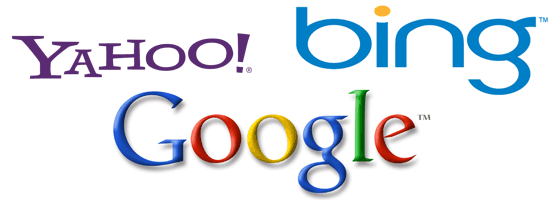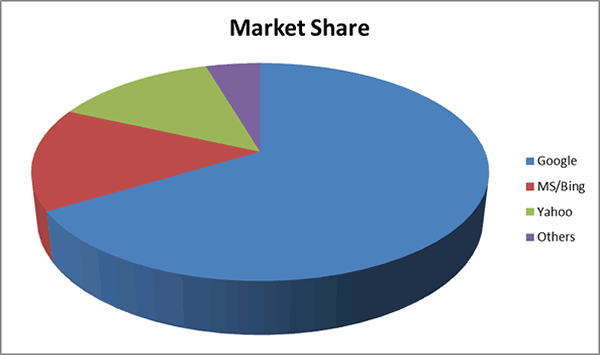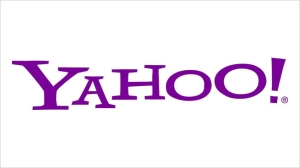If you spend any time on the Web, you’re probably familiar with the three major search engines: Google, Bing and Yahoo! Many other contenders have entered the fray at one time or another, but these three powerhouses have risen to the top of the online search kingdom.
You might be curious just what distinguishes these engines from one another. On a broad level, they all offer the same basic functionality — delivering relevant results to customized user queries — but there are numerous distinctions between The Big Three. Being aware of them can be beneficial to your search engine marketing efforts, and can give you a better understanding of the SEO landscape.
Let’s dive in and parse out some of the aspects that make each engine unique and worthwhile.
Overview
Here’s a graphical look at how the market share for search volume shakes out in the US (from a global standpoint, the Chinese language engine Baidu actually outranks both Bing and Yahoo!, but we won’t account for that here):
Share Percentages (as of March 2015)
Google: 64.4%
Bing: 20.1%
Yahoo!: 12.7%
Other (Ask/AOL/etc.): 2.8%
Numbers via ComScore
As you can see from the above graph and numbers, Google runs the show, owning about twice the share of Bing and Yahoo! combined. This is why our blogs on this site, not to mention our business practices, focus so heavily on Google and its algorithms. Aligning with this dominant engine’s guidelines and protocols is the most important step in a good search engine marketing strategy.
The nitty-gritty specifics of Google’s algorithm — like any other — aren’t publicly available, but we do know a few things outside of the general SEO tactics that apply. Like, they recently implemented an update that prioritizes mobile-friendly sites in their rankings. And they tend to showcase local results, giving a boost to companies with numerous online reviews.
Bing
The Bing name is somewhat new; the engine itself is not. Microsoft rebranded its MSN Live Search in 2009 and began pouring resources into technological advancements, in the hopes of making it a more legitimate competitor against Google in the industry.
To some extent, Bing is succeeding in this endeavor. The engine has seen steady growth and, in March, surpassed 20 percent of the market share. Around the time Bing came into existence, back in 2009, Microsoft sites drew around 8 percent of searches, with Yahoo! above 20 percent, so Bing has slowly but steadily traded places as the No. 2 player.
 The most noticeable calling card for Bing is its aesthetic appeal, which stands out in comparison to the minimalistic approach used by Google. When you open a Bing search on your desktop, you’ll be greeted by a big, colorful landscape as the backdrop to your search field (see the image to the right). From a technical standpoint, Bing is believed to prioritize static web content (as opposed to dynamic content like blogs), and the engine accounts for outgoing on-page link volume more than Google.
The most noticeable calling card for Bing is its aesthetic appeal, which stands out in comparison to the minimalistic approach used by Google. When you open a Bing search on your desktop, you’ll be greeted by a big, colorful landscape as the backdrop to your search field (see the image to the right). From a technical standpoint, Bing is believed to prioritize static web content (as opposed to dynamic content like blogs), and the engine accounts for outgoing on-page link volume more than Google.
Yahoo!
It is the oldest of the major search engines, founded all the way back in 1994. But as Bing has been gaining ground, Yahoo! has been losing it. Despite partnering with Firefox last year to become the browser’s default search engine (it was previously Google), Yahoo! has seen its market share shrink to 12 percent.
But the company’s identity stretches well beyond search. Yahoo! is a content goliath, housing numerous well trafficked categories such as Yahoo! News, Yahoo! Finance and Yahoo! Sports. The idea is that you can find what you’re looking for within their network rather than needing to search outside. That’s a sound business model but it makes Yahoo! a bit less handy for product searches and ecommerce, perhaps contributing to its declining usage.
The search algorithms for Yahoo! are very similar to those of Bing (the two companies actually have a Search Alliance and share ads), but more than the other engines Yahoo! is believed to focus on on-page content as opposed to meta descriptions and keywords.
Summary
The methods that these engines use to index websites and search for relevant results are largely the same, so utilizing standard white-hat SEO techniques — such as strategic keyword placement in content, inbound and outbound linking, and search-friendly headers and titles — will help you achieve better rankings across all three. If you’re trying to cater your site specifically to one search engine, there’s no doubt that Google is the right choice, but with Bing becoming an increasingly legitimate player in the space, that one can’t be overlooked.
If your company is seeking to rank higher on all the major search engines, shoot us a message and let’s chat!




